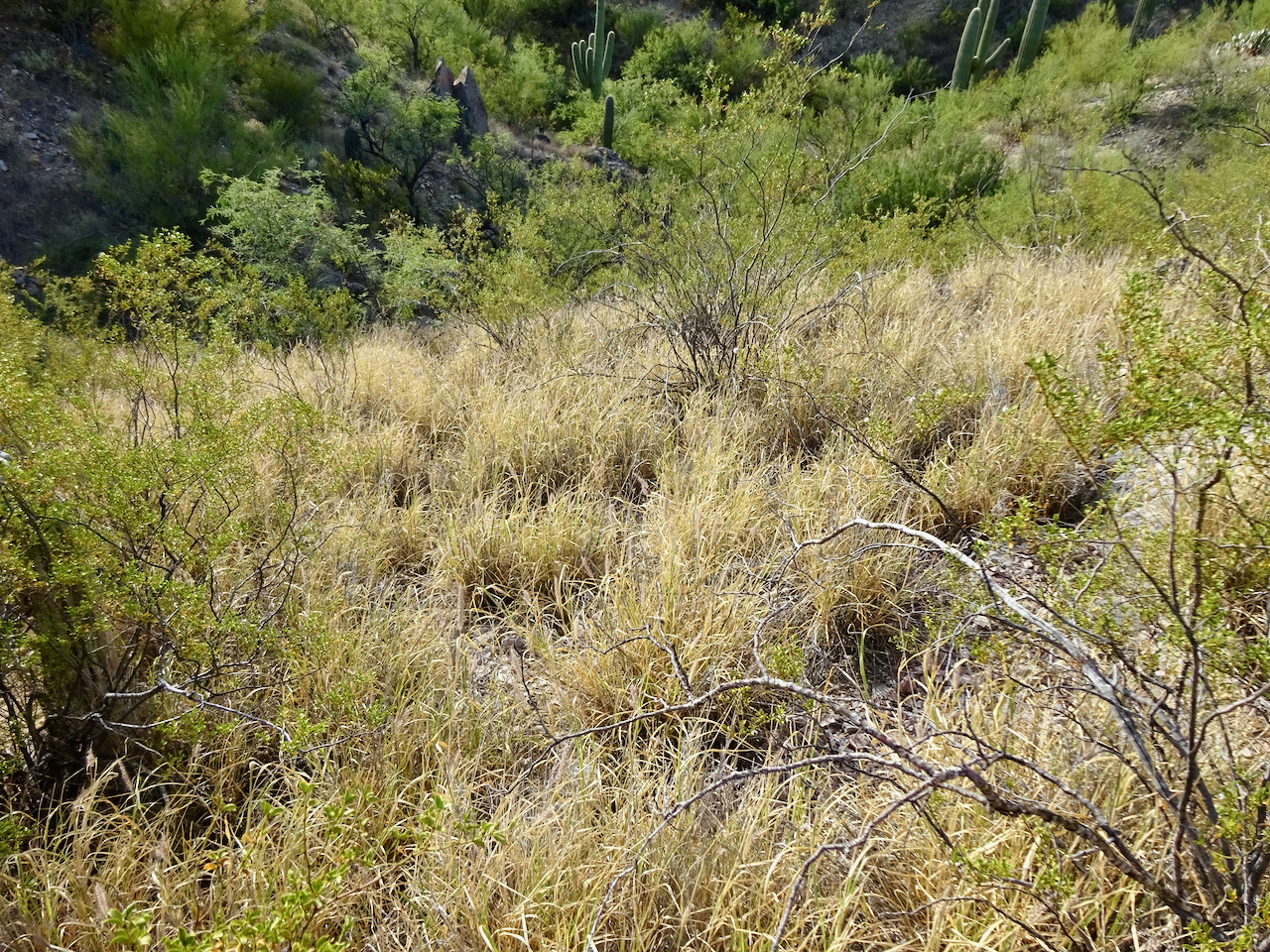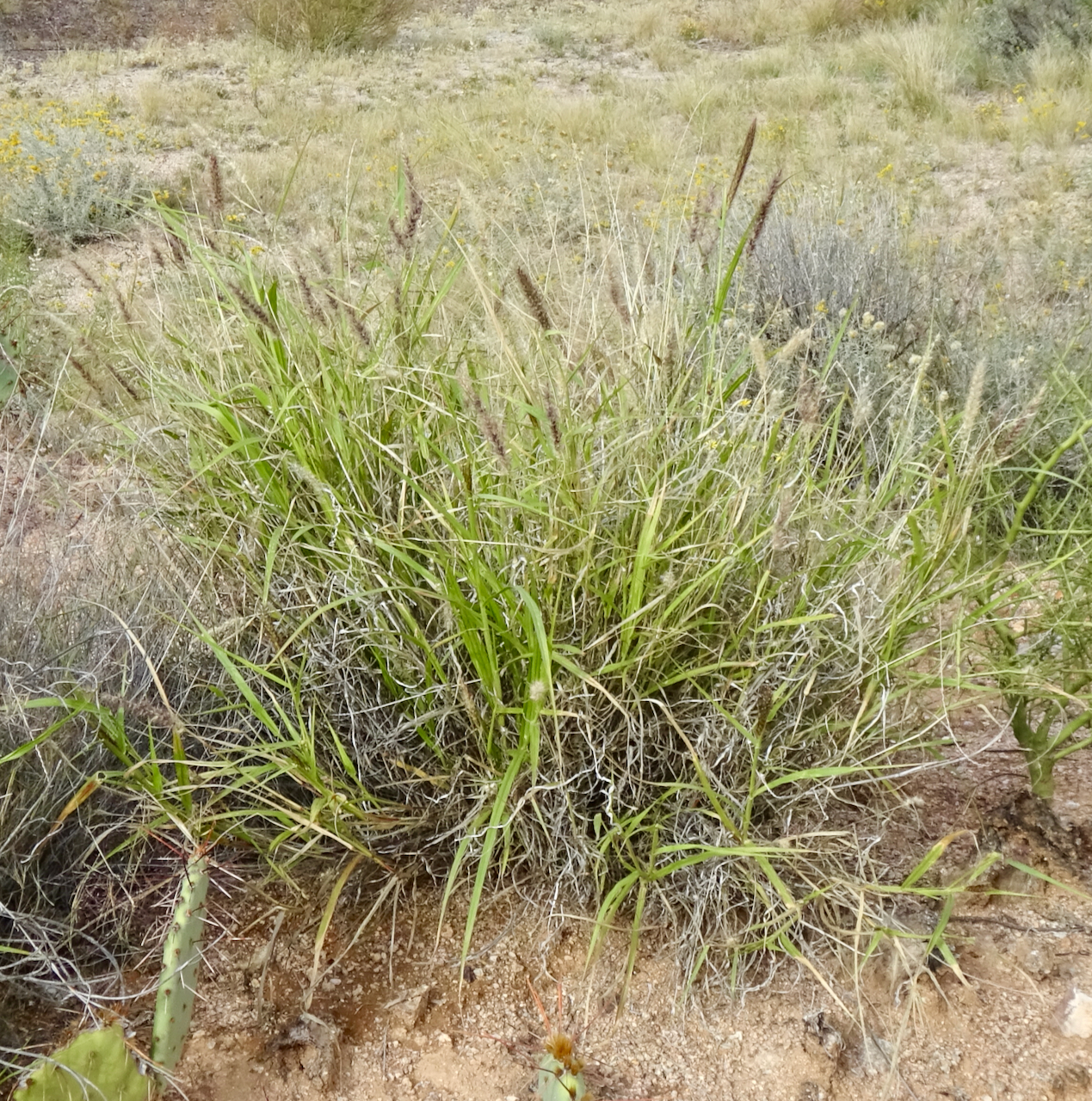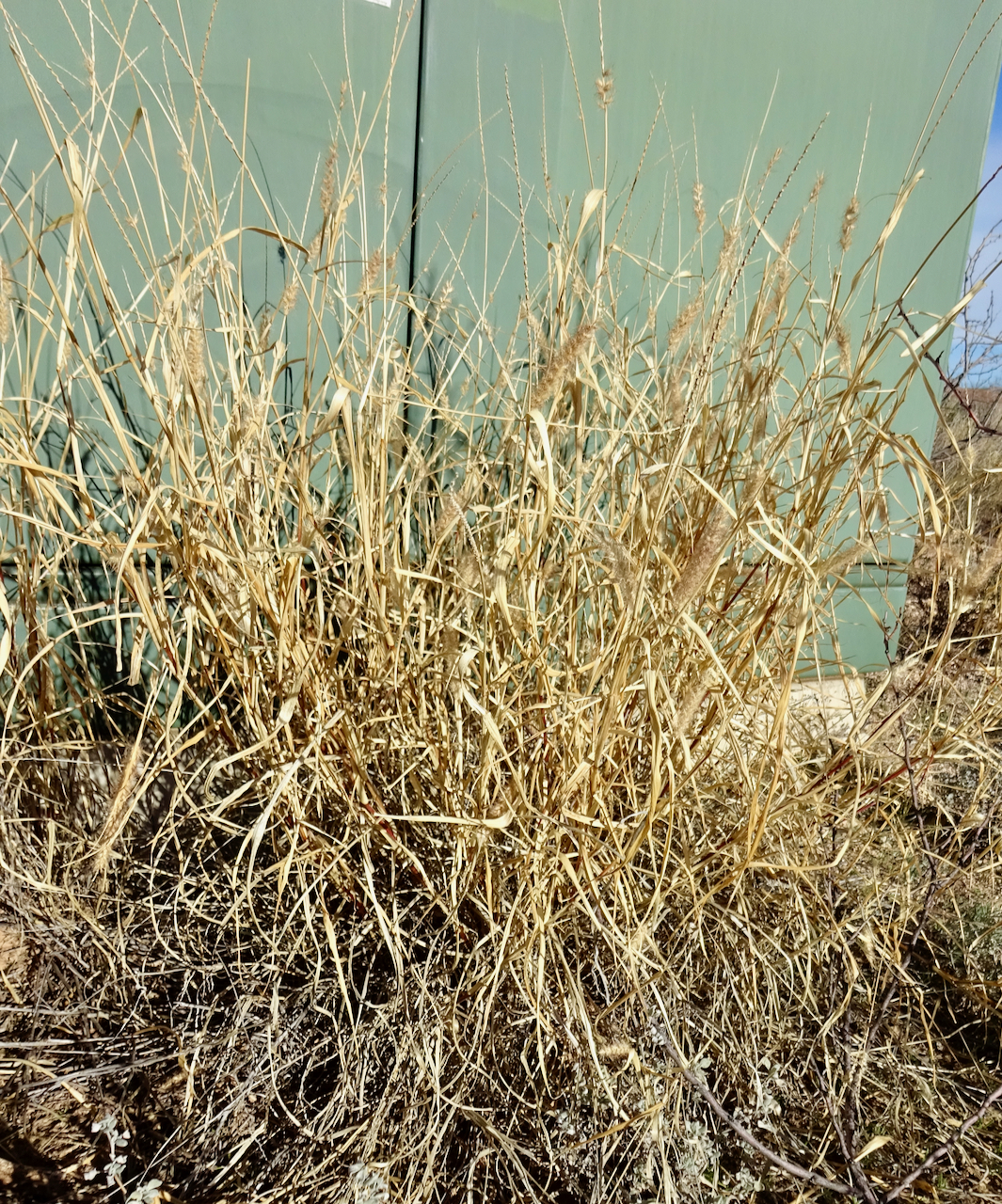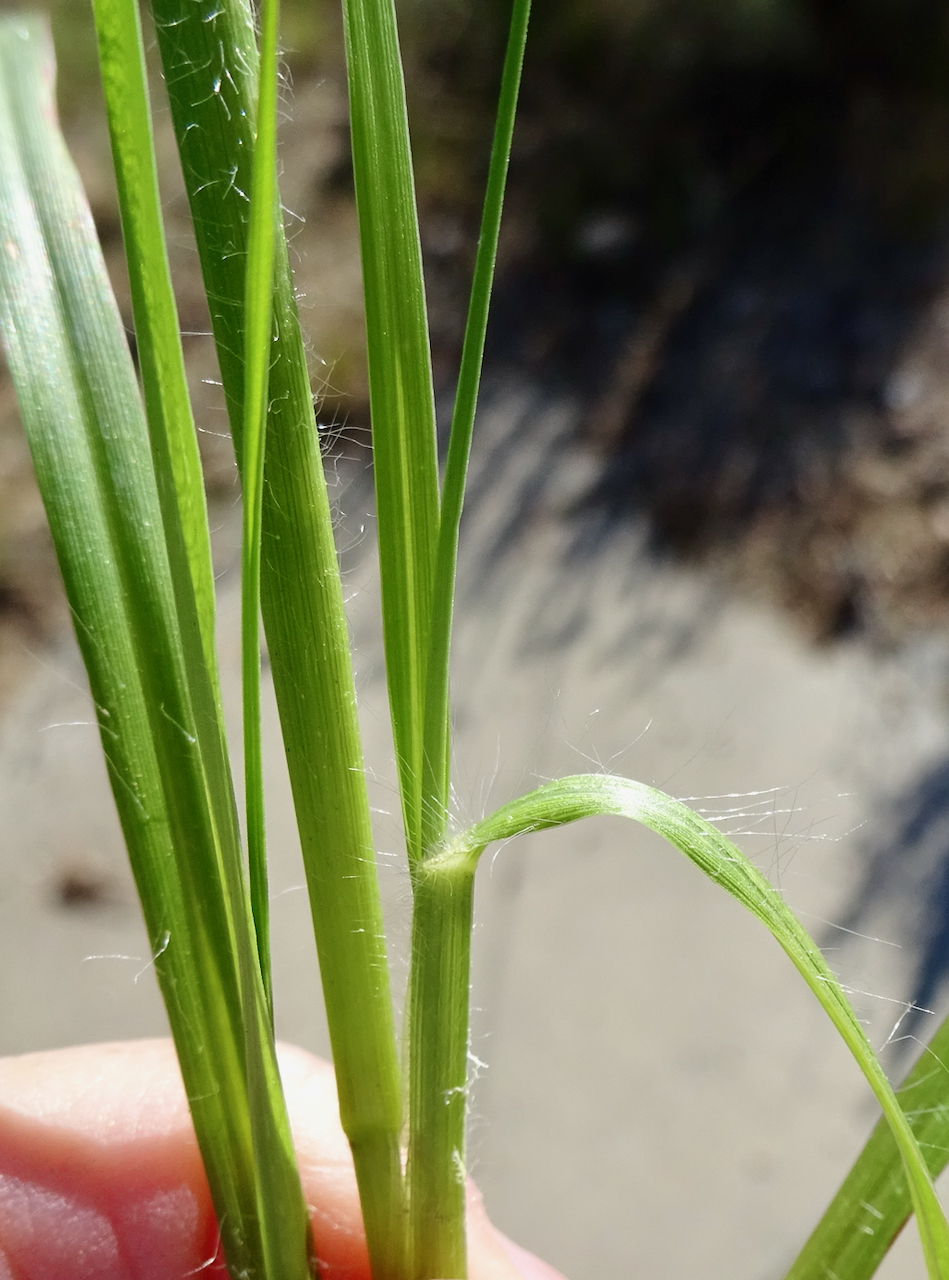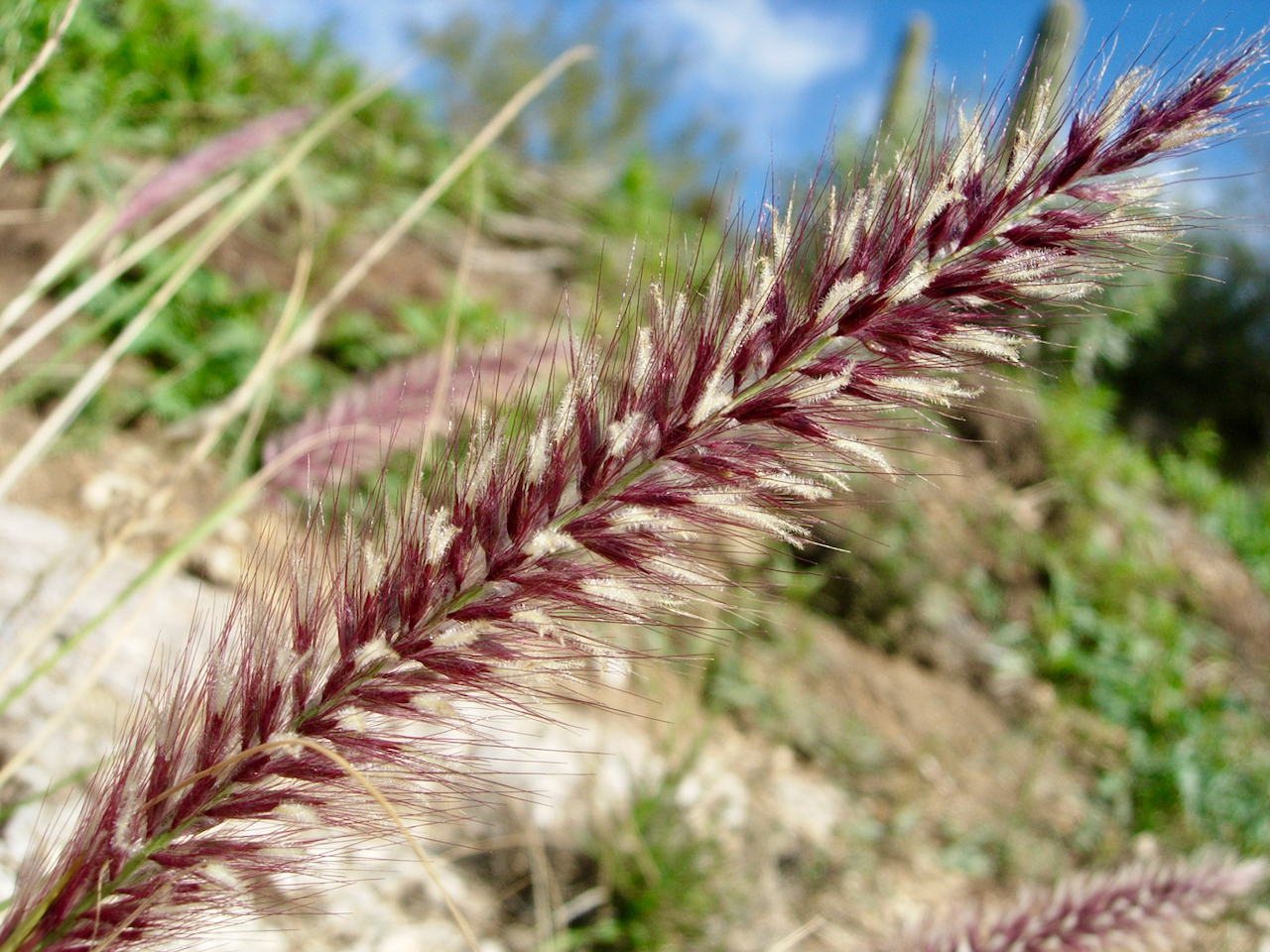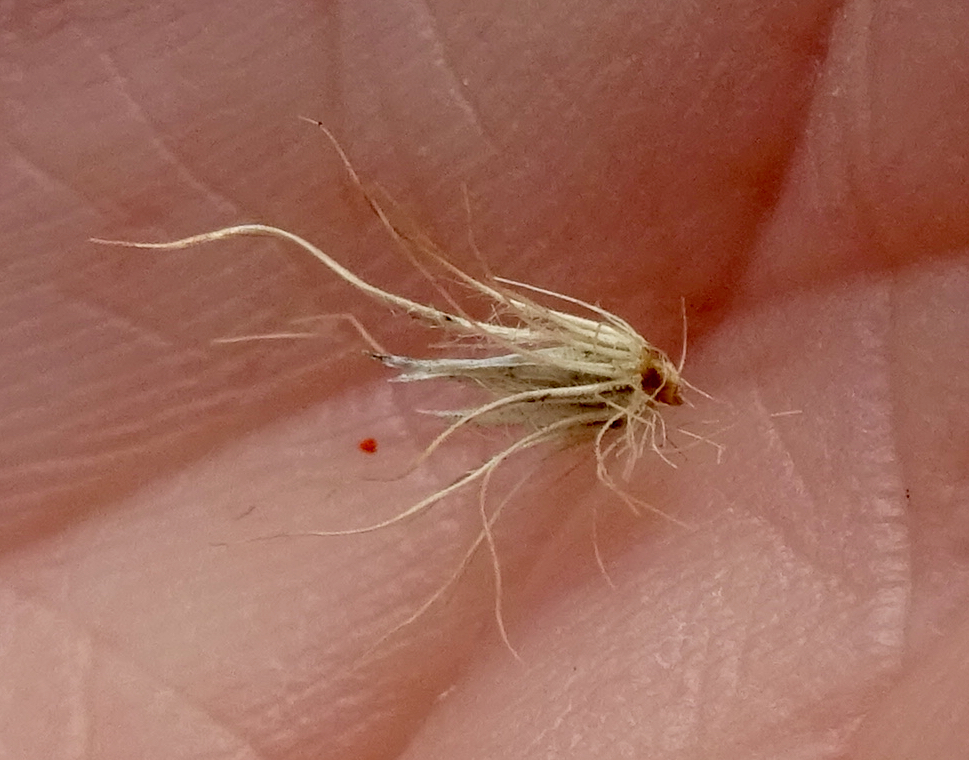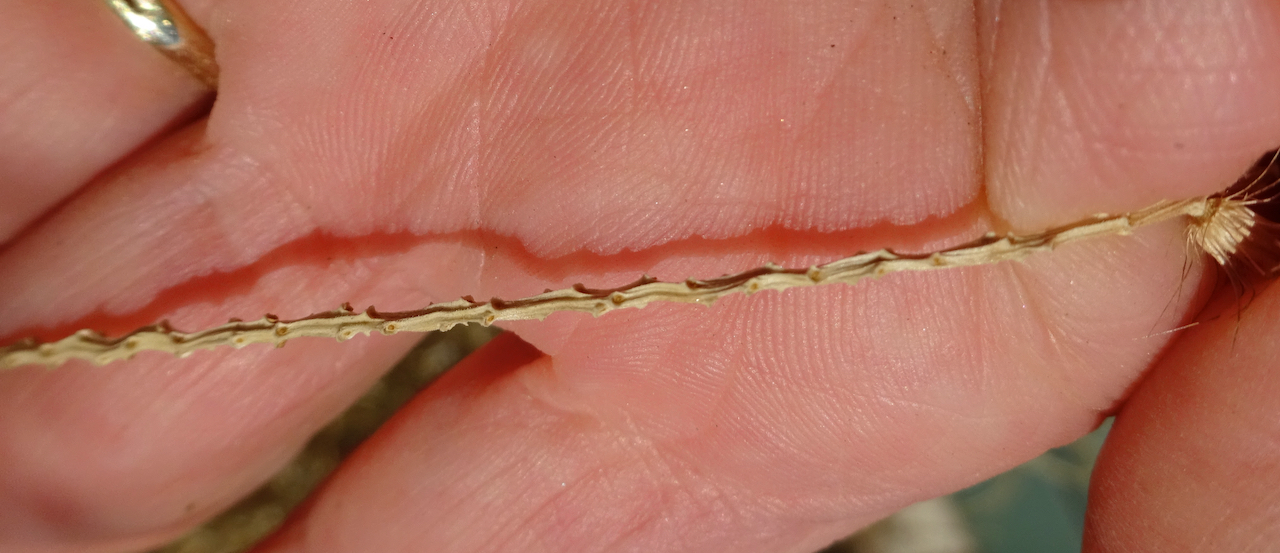Buffelgrass
Cenchrus ciliaris
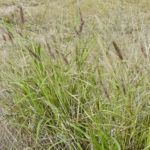
This is an INVASIVE PLANT!
Buffelgrass is an aggressive invader that is a danger to our native flora. It can weaken and kill native plants by competing with them for water, nutrients, and sunlight. The dense roots of buffelgrass inhibit germination of new native plants in buffelgrass infested areas. Buffelgrass fires burn very hot (1400 - 1600 degrees F compared to 400 - 750 degrees F for native plants) and buffelgrass fires can kill almost all native plants. Dense buffelgrass plantings provide a path for fires to spread. The photo below shows buffelgrass covering the ground in Saguaro National Park immediately prior to a buffelgrass pull in 2020.
Buffelgrass is a perennial native to Africa and Asia. It was introduced into the US as cattle forage in the 1930s and was widely planted around Tucson in the 1970s and 1980s for erosion control.
Buffelgrass has relatively wide leaves (3/8 inch) and can grow to over 4 feet in height, though it is often shorter. Flowering mainly in fall, buffelgrass produces a long stalk of reddish seeds. Established plants can begin flowering as early as March if rainfall is sufficient, and the plants will continue to grow throughout the warm season if rains are ample. In contrast, most native plants grow during one season with little growth the rest of the year. This growth pattern helps buffelgrass out-compete our native grasses and wildflowers.
Many organizations in the desert Southwest are fighting buffelgrass. It can be eliminated by pulling from the ground. The herbicide glyphosate is effective. If the infestation is small, cut off and dispose of the seedheads in the trash before pulling the plant from the ground so seed spread is reduced.
Notes:
- The scientific name Pennisetum ciliare is frequently used for this plant.
More Information
Is it Buffelgrass? Includes photos to help you distinguish buffelgrass from cane beardgrass and bristlegrass.
Field Guide for Managing Buffelgrass from USDA
Information from various sources:
Map of distribution in US (blue indicates present but not native; pink indicates plant is considered a noxious weed)
Technical botanical description from SEINet
